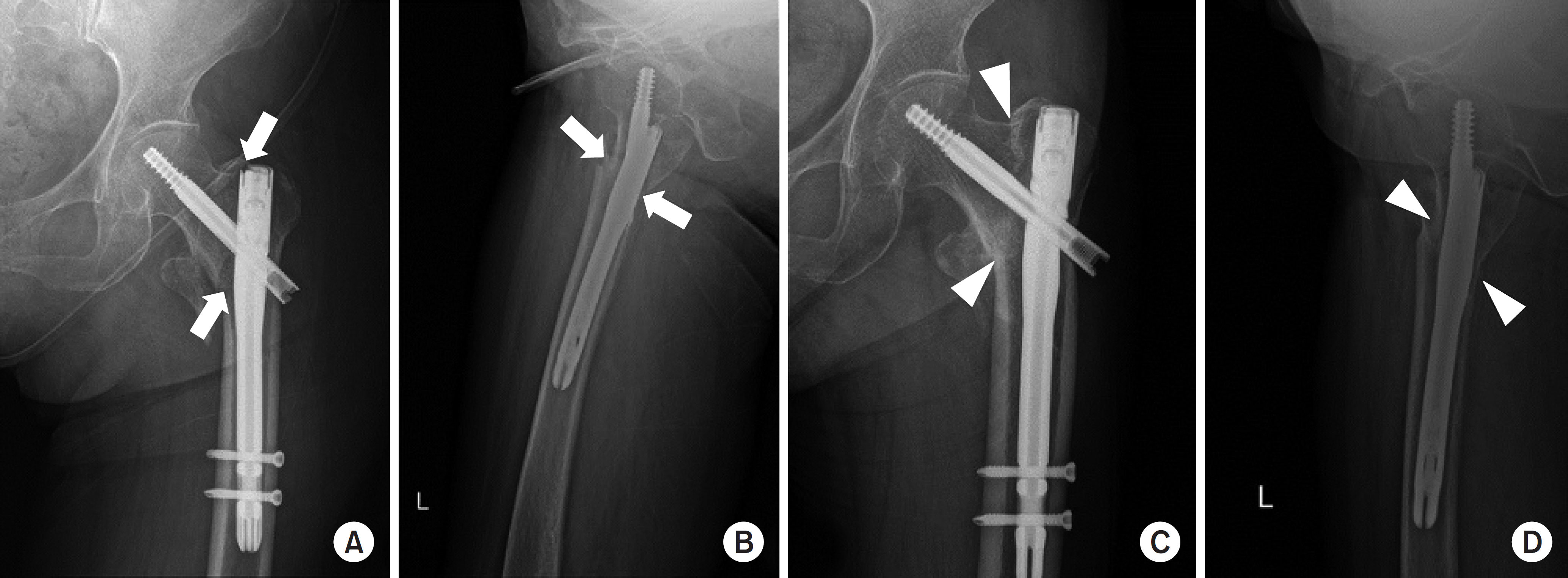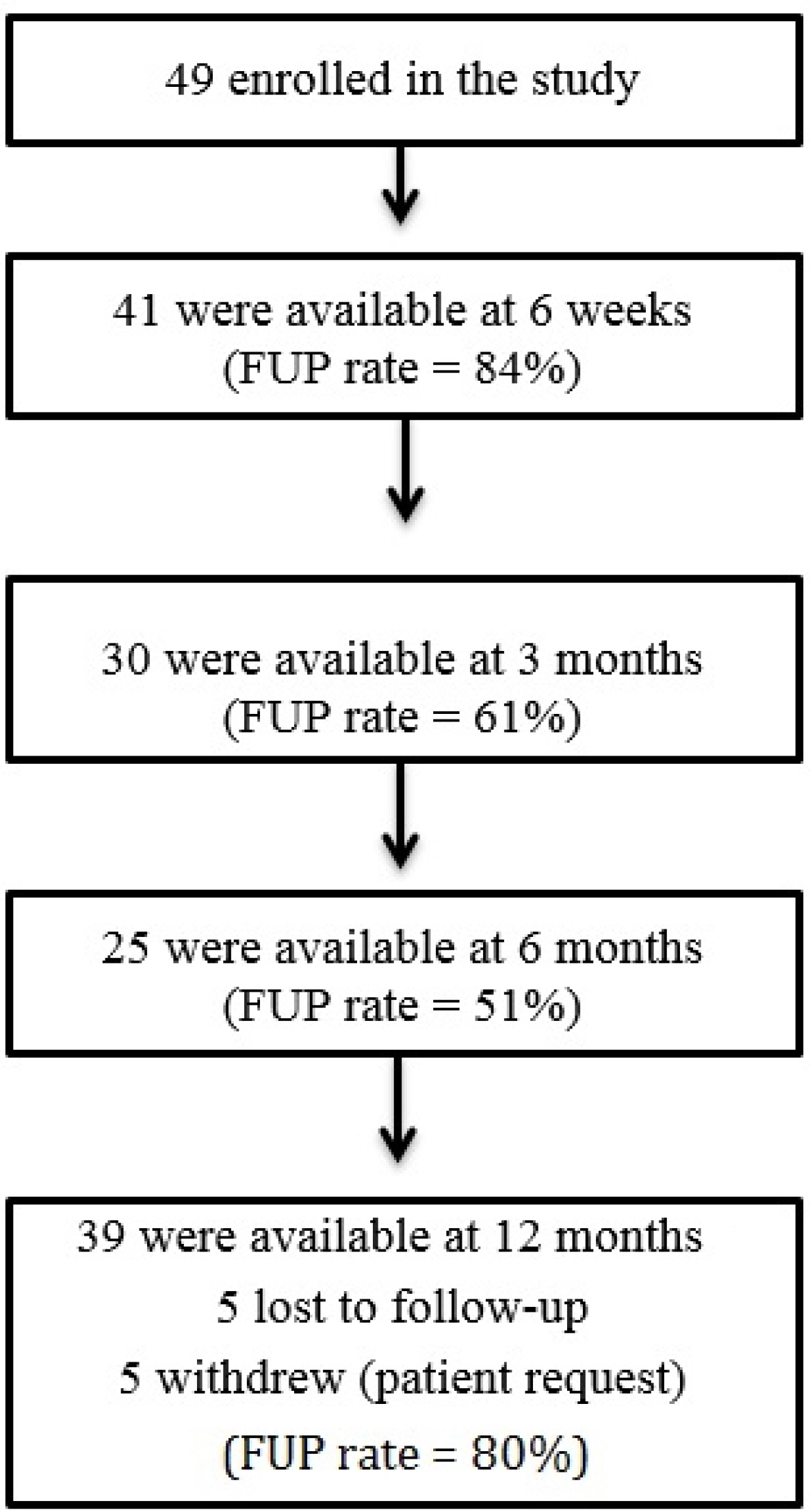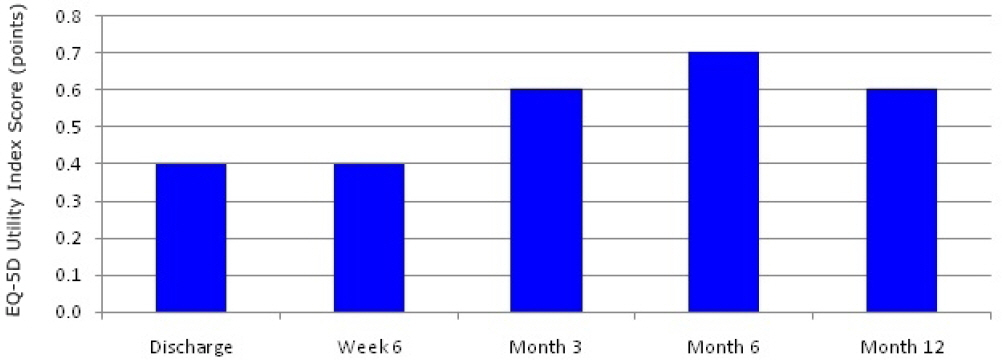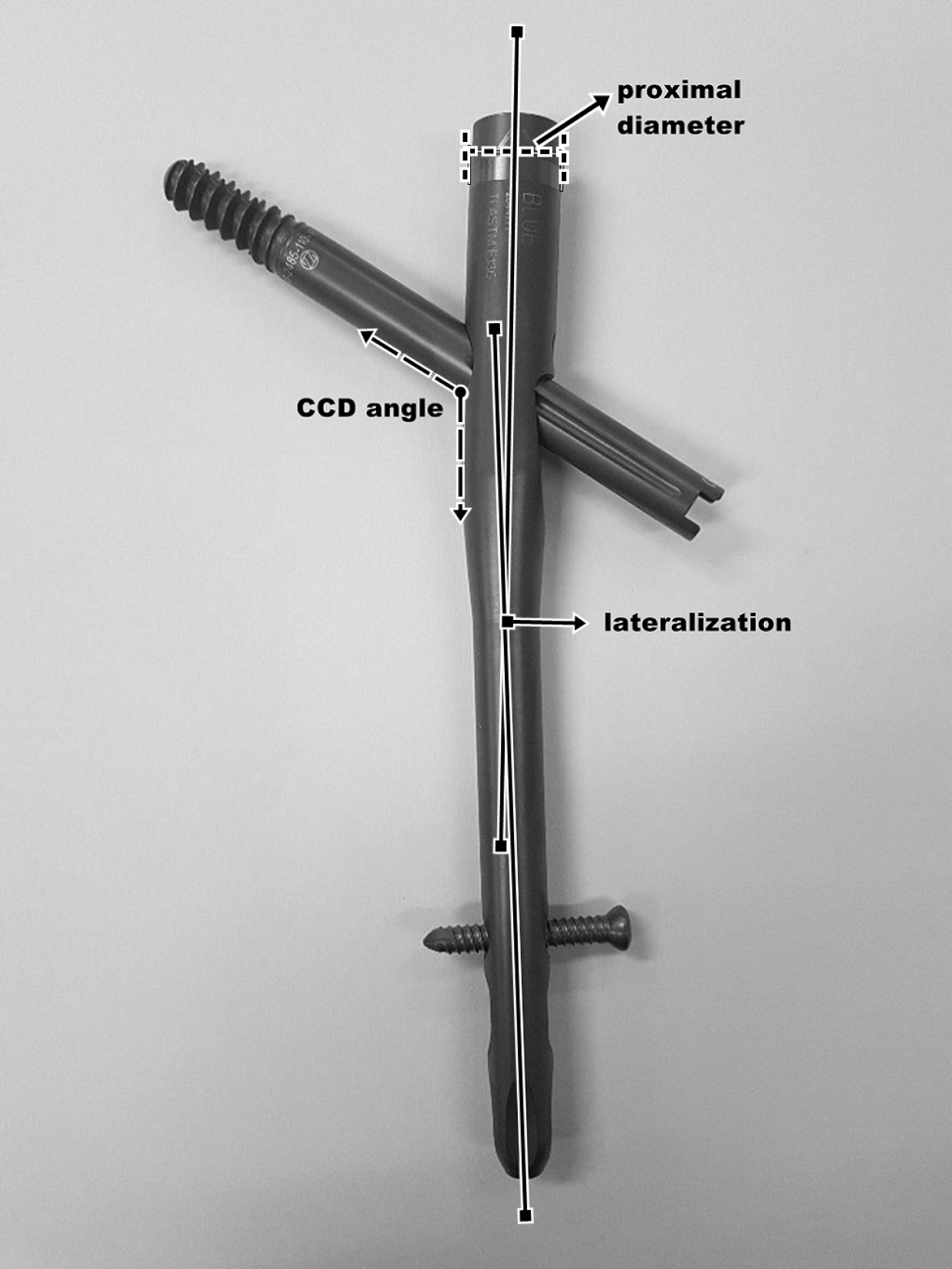J Korean Fract Soc.
2019 Jan;32(1):35-42. 10.12671/jkfs.2019.32.1.35.
Treatment of the Proximal Femoral Fracture Using the New Design Cephalomedullary Nail: Prospective Outcomes Study
- Affiliations
-
- 1Department of Orthopaedic Surgery, Jeju National University Hospital, Jeju, Korea. kangu70@gmail.com
- KMID: 2432496
- DOI: http://doi.org/10.12671/jkfs.2019.32.1.35
Abstract
- PURPOSE
The aim of this study is to investigate the clinical performance and safety of Zimmer® natural nail cephalomedullary nail (ZNN CM nail) in the treatment of proximal femur fractures.
MATERIALS AND METHODS
The following research was conducted as a prospective, non-comparative, single center outcome study. Upon providing written informed consent, enrolled patients' data were collected and analyzed. Postoperative follow-up visits were scheduled at 6 weeks, 3 months, 6 months, and 1 year. Follow-up evaluation included radiographic assessment, physical examination, and quality of life and adverse events reports.
RESULTS
Thirty-nine patients were available for evaluation at one year postoperative. The patients reported the mean EuroQol-5 Dimension score increased after surgery: from 0.4 points at discharge (n=49) to 0.6 points at 1-year post-surgery (n=39). The mean Harris hip score also increased after surgery: from 56.3 points at discharge (n=49) to 72.1 points at 1 year (n=12). Bone union was seen in 64% (n=16) in 6 months and 95% (n=37) in 1 year.
CONCLUSION
The results of this 1-year follow-up study affirmed the effectiveness and safety of the ZNN CM nail in the treatment of proximal femur fractures.
MeSH Terms
Figure
Reference
-
References
1. Burge R, Dawson-Hughes B, Solomon DH, Wong JB, King A, Tosteson A. Incidence and economic burden of osteoporosis-related fractures in the United States, 2005–2025. J Bone Miner Res. 22:465–475. 2007.
Article2. Center JR, Nguyen TV, Schneider D, Sambrook PN, Eisman JA. Mortality after all major types of osteoporotic fracture in men and women: an observational study. Lancet. 353:878–882. 1999.
Article3. Lenich A, Vester H, Nerlich M, Mayr E, Stöckle U, Füchtmeier B. Clinical comparison of the second and third generation of intramedullary devices for trochanteric fractures of the hip: Blade vs screw. Injury. 41:1292–1296. 2010.4. Kuzyk PR, Lobo J, Whelan D, Zdero R, McKee MD, Schemitsch EH. Biomechanical evaluation of extramedullary versus intramedullary fixation for reverse obliquity intertrochanteric fractures. J Orthop Trauma. 23:31–38. 2009.
Article5. Albareda J, Laderiga A, Palanca D, Paniagua L, Seral F. Complications and technical problems with the gamma nail. Int Orthop. 20:47–50. 1996.
Article6. Butt MS, Krikler SJ, Nafie S, Ali MS. Comparison of dynamic hip screw and gamma nail: a prospective, randomized, controlled trial. Injury. 26:615–618. 1995.
Article7. Herrera A, Domingo LJ, Calvo A, Martínez A, Cuenca J. A comparative study of trochanteric fractures treated with the Gamma nail or the proximal femoral nail. Int Orthop. 26:365–369. 2002.8. Johnson LJ, Cope MR, Shahrokhi S, Tamblyn P. Measuring tip-apex distance using a picture archiving and communication system (PACS). Injury. 39:786–790. 2008.
Article9. Corrales LA, Morshed S, Bhandari M, Miclau T 3rd. Variability in the assessment of fracture-healing in orthopaedic trauma studies. J Bone Joint Surg Am. 90:1862–1868. 2008.
Article10. Morshed S. Current options for determining fracture union. Adv Med. 2014:708574. 2014.
Article11. Hardy DC, Descamps PY, Krallis P, et al. Use of an intramedullary hip-screw compared with a compression hip-screw with a plate for intertrochanteric femoral fractures. A prospective, randomized study of one hundred patients. J Bone Joint Surg Am. 80:618–630. 1998.
Article12. Leung KS, So WS, Shen WY, Hui PW. Gamma nails and dynamic hip screws for peritrochanteric fractures. A randomised prospective study in elderly patients. J Bone Joint Surg Br. 74:345–351. 1992.
Article13. Rosenblum SF, Zuckerman JD, Kummer FJ, Tam BS. A biomechanical evaluation of the Gamma nail. J Bone Joint Surg Br. 74:352–357. 1992.
Article14. McKibbin B. The biology of fracture healing in long bones. J Bone Joint Surg Br. 60:150–162. 1978.
Article15. Radford PJ, Needoff M, Webb JK. A prospective randomised comparison of the dynamic hip screw and the gamma locking nail. J Bone Joint Surg Br. 75:789–793. 1993.
Article16. Halder SC. The Gamma nail for peritrochanteric fractures. J Bone Joint Surg Br. 74:340–344. 1992.
Article17. Park JH, Park JW, Wang JH, Lee JW, Lee JI, Kim JG. Treatment of intertrochanteric fracture: comparison of proximal femoral nail and proximal femoral nail A. Korean Soc Fract. 21:103–109. 2008.
Article18. Shin DK, Kwun KW, Kim SK, Lee SW, Choi CH, Kim KM. Proximal femoral nail(PFN) for femur intertrochanteric fracture. J Korean Fract Soc. 15:328–335. 2002.
Article19. Leung KS, Procter P, Robioneck B, Behrens K. Geometric mismatch of the Gamma nail to the Chinese femur. Clin Orthop Relat Res. 323:42–48. 1996.
Article20. Hwang JH, Oh JK, Han SH, Shon WY, Oh CW. Mismatch between PFNa and medullary canal causing difficulty in nailing of the pertrochanteric fractures. Arch Orthop Trauma Surg. 128:1443–1446. 2008.
Article21. Pu JS, Liu L, Wang GL, Fang Y, Yang TF. Results of the proximal femoral nail antirotation (PFNA) in elderly Chinese patients. Int Orthop. 33:1441–1444. 2009.
Article22. Akan K, Cift H, Ozkan K, Eceviz E, Tasyikan L, Eren A. Effect of osteoporosis on clinical outcomes in intertrochanteric hip fractures treated with a proximal femoral nail. J Int Med Res. 39:857–865. 2011.
Article23. D'Arrigo C, Carcangiu A, Perugia D, et al. Intertrochanteric fractures: comparison between two different locking nails. Int Orthop. 36:2545–2551. 2012.24. Vaquero J, Munoz J, Prat S, et al. Proximal Femoral Nail Anti-rotation versus Gamma3 nail for intramedullary nailing of unstable trochanteric fractures. A randomised comparative study. Injury. 43(Suppl 2):S47–54. 2012.
Article25. Simmermacher RK, Ljungqvist J, Bail H, et al. The new proximal femoral nail antirotation (PFNA) in daily practice: results of a multicentre clinical study. Injury. 39:932–939. 2008.
Article26. Wu D, Ren G, Peng C, Zheng X, Mao F, Zhang Y. InterTan nail versus Gamma3 nail for intramedullary nailing of unstable trochanteric fractures. Diagn Pathol. 9:191. 2014.
Article27. Buecking B, Boese CK, Seifert V, Ruchholtz S, Frink M, Lechler P. Femoral offset following trochanteric femoral fractures: a prospective observational study. Injury. 46(Suppl 4):S88–92. 2015.
Article
- Full Text Links
- Actions
-
Cited
- CITED
-
- Close
- Share
- Similar articles
-
- New Approach in the Treatment of Intertrochanteric Fracture Using a Cephalomedullary Nail
- Internal Fixation of Pauwels Type-3 Undisplacedincomplete Insufficiency Femoral Neck Fractures with Cephalomedullary Nails
- Breakage of Cephalomedullary Nail Used in the Treatment of Proximal Femur Fractures: Case Report
- Surgical Results of the Cephalomedullary Nail for the Femoral Intertrochanteric Fracture: Comparison between Non-experienced Surgeons and Experienced Surgeon
- Surgical Treatment of Ipsilateral Multi-Level Femoral Fracture Treated Using Antegrade Intramedullary Nail








